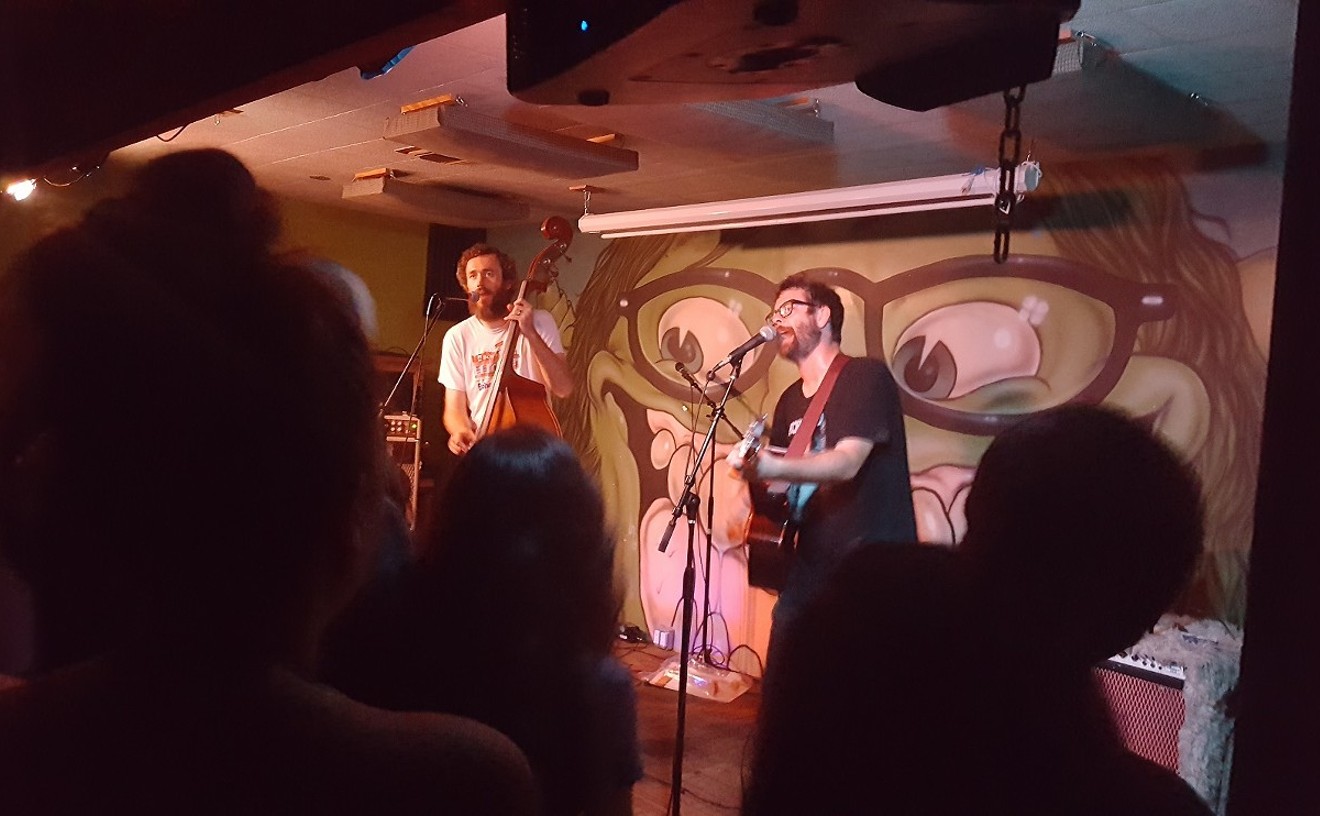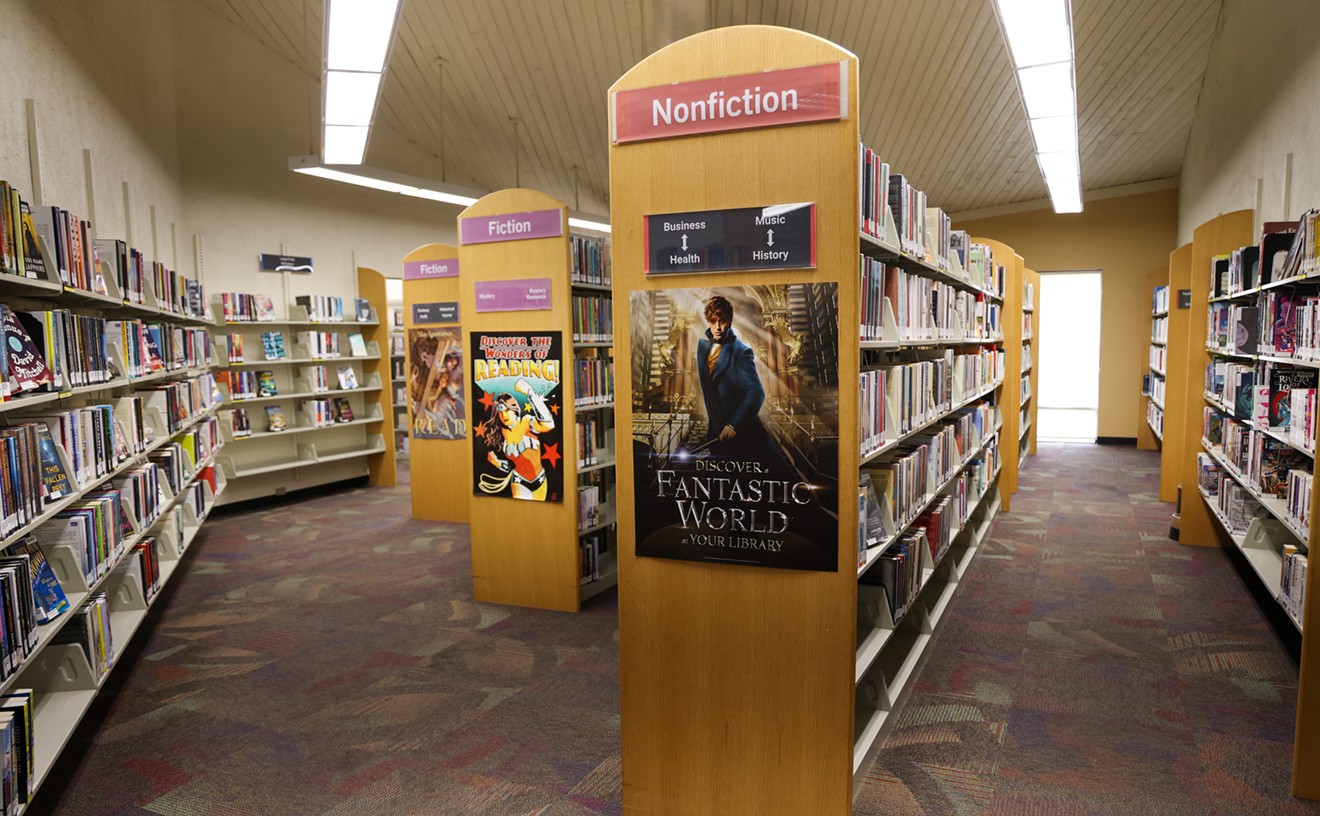Lately, I've been trying to break myself of this habit. But even before I was trying to undo this nasty problem, there was always an exception that shook me from my reverie, a type of building that never failed to catch my eye: Valley National Bank buildings. Scattered across town, they leapt out at me from various curbs like old friends hollering, "Hey! You just drove past two new housing developments and a grocery store that's caught fire, but look at me!"
I can't help but comply. The Valley National Bank buildings, most of them built in the early 1960s and most now owned by Chase bank, are all amazing. There's the Los Arcos branch at 74th Street and McDowell, with its massive metal W-shaped columns supporting a pebble-strewn roof; the tiny, scallop-roofed ChrisTown Branch with its many friezes depicting what I thought, as a child, was "ancient money." More famously, there's the recently demolished Tempe geodesic dome-roofed VNB, and the much-discussed "Flintstones" branch at 44th Street and Camelback, which the city is trying to get listed as an historic landmark before it falls prey to a high-rise.
The one over at Third Avenue and Indian School, more beautiful from the back than its street-facing façade, is also lovely. It's been taken over by an engineering firm and rehabbed by architect Jack Black, who wisely kept many of the building's best elements: stone-studded walls and cast-concrete columns. Even the boxy, Plain Jane VNBs (like the one at 16th Street and Camelback, with its jutting red brick detailing and its many shade-can panels; or the similar sandstone version standing at Seventh Avenue and Thomas, where I bank these days) have more style and pizzazz than most other midcentury buildings standing today.
Eye-catching bank buildings seemed like a waste of good design until I spoke to local architecture expert Walt Lockley (whose imaginative writings about our city's development can be found at www.waltlockley.com). Lockley pointed out that in the middle of the last century, banking occupied a more prominent place in the community. Back then, one actually visited the bank to transact money business, rather than moving it around via the Internet or at the grocery store ATM. So it turns out that the eye-catchiness of the VNB buildings was quite deliberate. In the late 1950s, Valley National board chairman Walter Bimson saw that beautiful buildings would draw more banking business from the several competing local chains, and would lead to a more vibrant, booming big city.
"Bimson was more than just a savvy banker," Lockley says. "He was a frustrated architect. He was very aware of the role of banks in a thriving economy, and his specific focus was on commissioning buildings that would call out to passing automobile traffic."
Back then, Bimson's roadside attractions (most of which were designed by local architecture firm Weaver and Drover) weren't embraced by everyone. Up 'til then, banks had mostly been housed in more demure, conservatively crafted buildings, and it was considered undignified to drop the business of banking into these vaguely futuristic, rock-encrusted structures. (In the late 1940s, Bimson hired Frank Lloyd Wright to design one of his Phoenix VNBs. Wright submitted a model that included a then-unheard of drive-through teller station. Bimson's board went ballistic, and the plan was scrapped.)
All these years later, Bimson's buildings are still shouting to passing traffic. And if few of us are actually stopping by these stately structures to move our money around anymore, we're at least able to admire them as what Bimson secretly meant for them to be: handsome, still-splendid gifts to our city.










